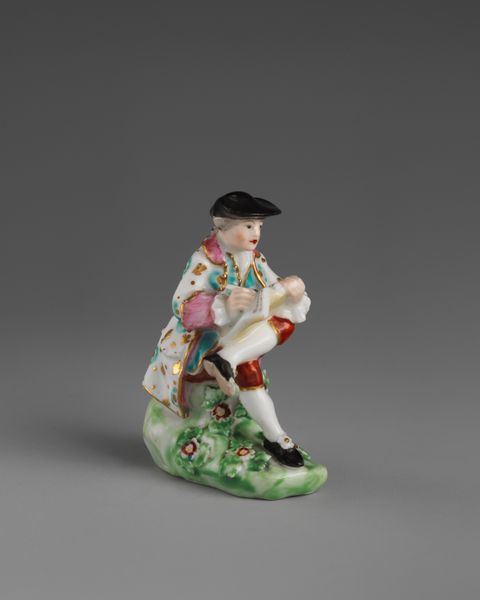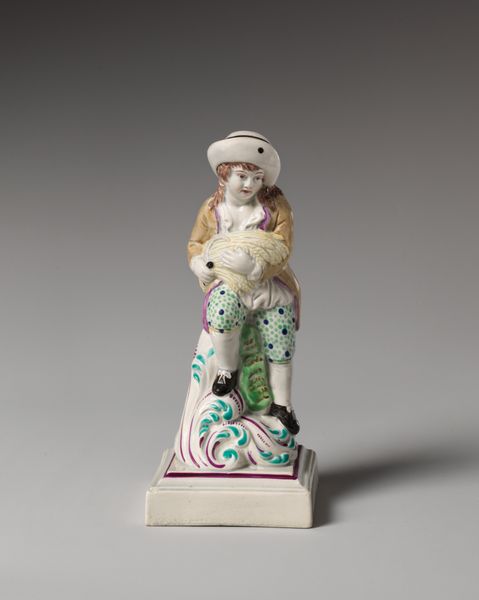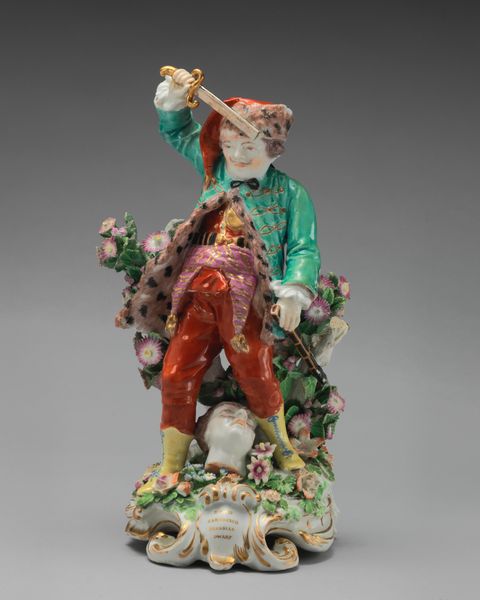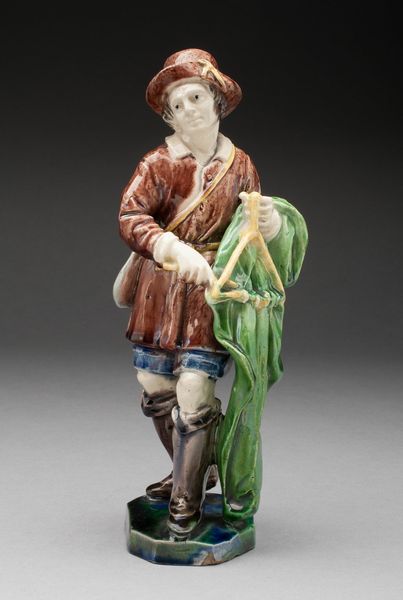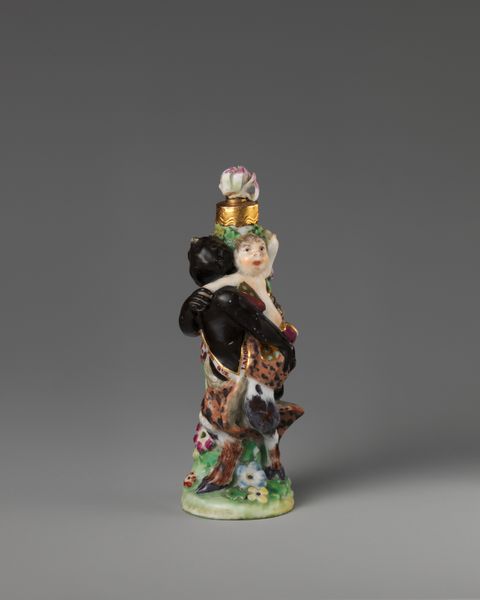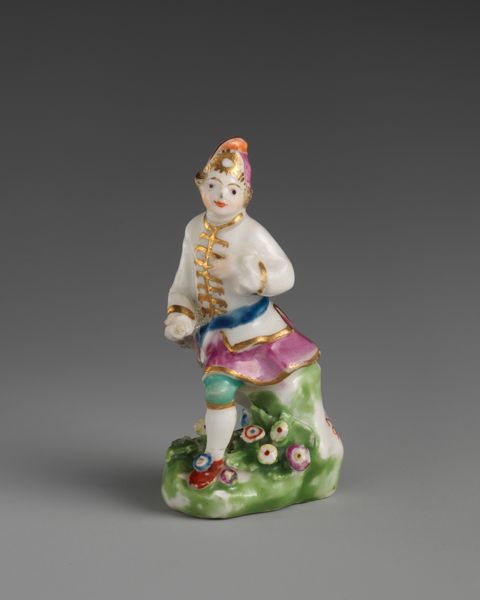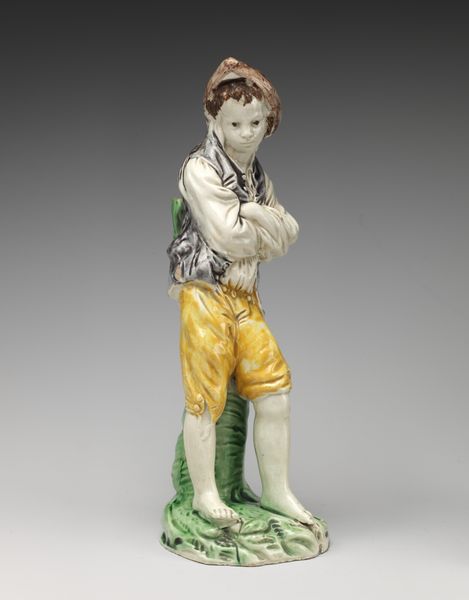
Dimensions: height 27 cm, width 14 cm, depth 14 cm
Copyright: Rijks Museum: Open Domain
This polychrome faience sculpture of a bagpipe player was made in Delft, at De Porceleyne Byl. Such figurines were fashionable in the 18th century, and their significance reaches beyond mere decoration. Delftware potters often drew inspiration from contemporary life, reflecting the values and pastimes of the Dutch middle class. We might consider this piper alongside the paintings of the time: how do visual codes like dress and musical instrument serve to depict class? The bagpipe itself, though not typically Dutch, could represent an interest in foreign cultures or perhaps a playful, slightly exotic touch to the Dutch interior. What does it mean to display such an object in the home? To fully understand this piece, we'd want to delve into period inventories, trade records, and perhaps even sheet music collections. Only then can we appreciate how these factors shaped the artistic production and consumption of earthenware figures in the Netherlands.
Comments
No comments
Be the first to comment and join the conversation on the ultimate creative platform.
